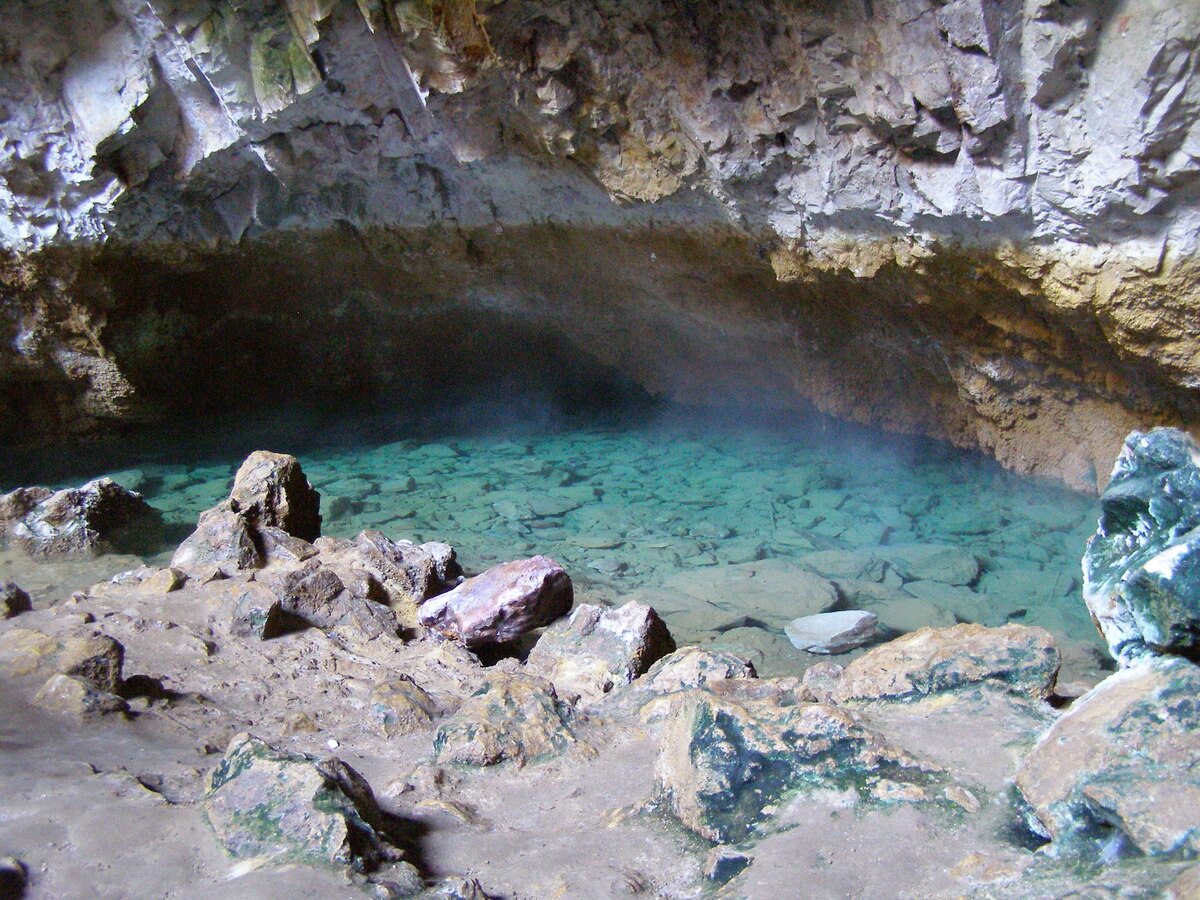World 🢖 Australia and Oceania 🢖 Polynesia 🢖 New Zealand 🢖 Waikato
Geothermal fields 🢔 Geothermal features 🢔 Geological wonders 🢔 Categories of wonders
Wonder
Orakei Korako
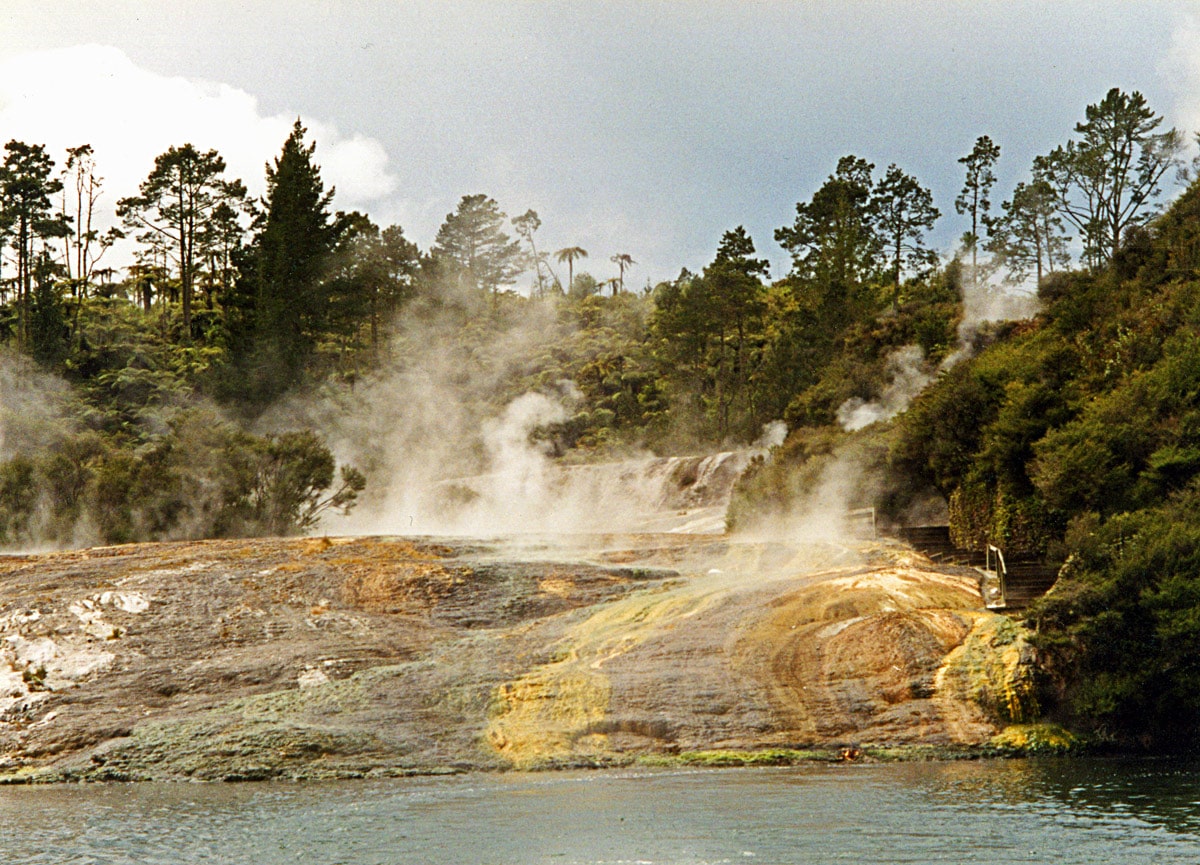
 In short
In short
Part of the beautiful Orakei Korako is flooded but the remaining part belongs to the world’s most exciting geothermal fields. There are some 35 active geysers and beautiful “stone waterfalls” – several large sinter terraces. Here is described Waipapa – the best-known part of Orakei Korako thermal springs that is seen by most visitors to this area.
 51.3%
51.3%
GPS coordinates
Location, address
Alternate names
Map of the site
If you see this after your page is loaded completely, leafletJS files are missing.
 In detail
In detail
Geological setting
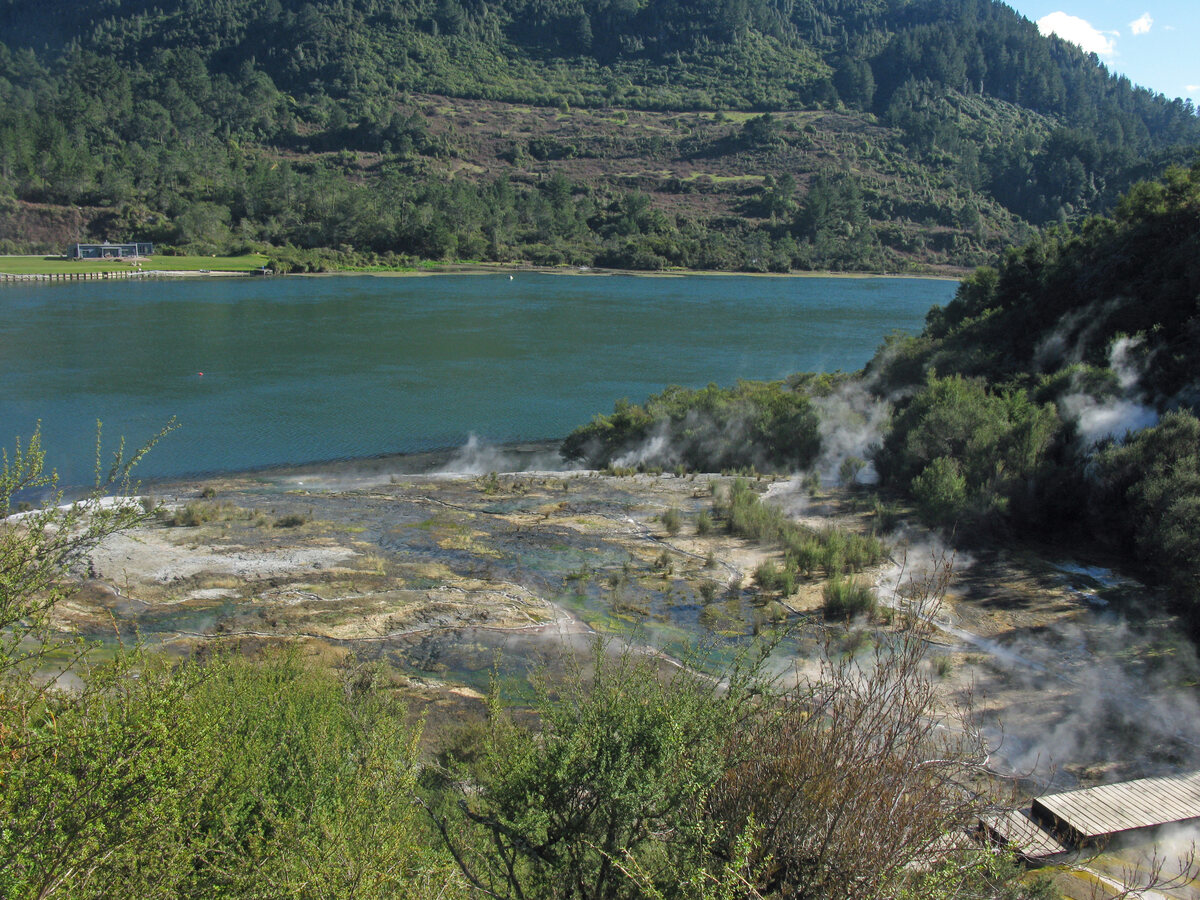
There are more popular and better known geothermal fields in New Zealand – such as the amazing Waiotapu with its unique Champagne Pool, Whakarewarewa, and Tikitere. But the most impressive, richest with geysers and, to Wondermondo’s mind, the most beautiful geothermal field in New Zealand is the central part of Orakei Korako.
Just like other geyser areas of New Zealand, Orakei Korako is located in the Taupō Volcanic Zone in the central part of North Island. It has formed in recent volcanic rocks of the Pākihi Supergroup.
The term “Orakei Korako” (“Place of Adorning”) applies to a wider area along the banks of Waikato Rover with several locations of hot springs and geysers. But by far the most impressive part of Orakei Korako is Waipapa – some 500 m long and up to 200 m wide area with an enormous sinter terrace on the eastern bank of Waikato River.
Flooding of Orakei Korako
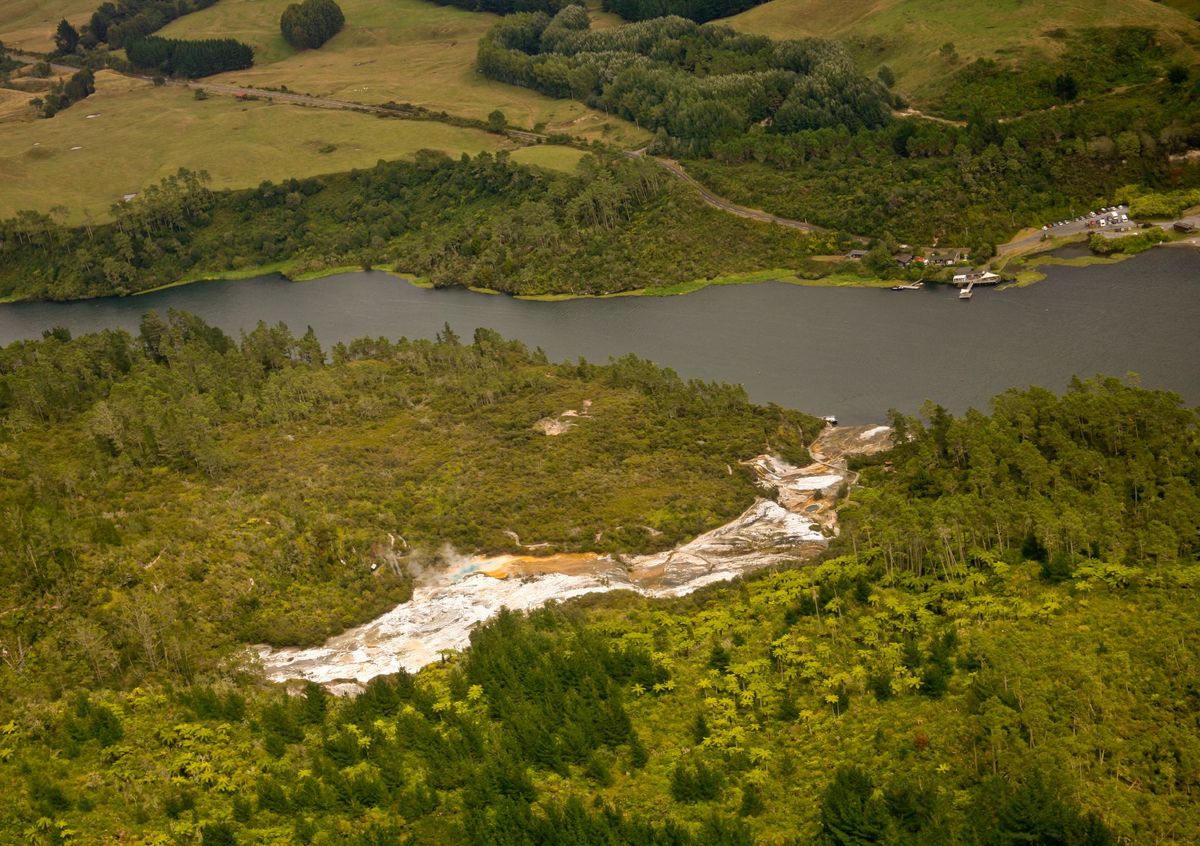
In January 1961 the Waikato River valley changed – there was built Ohakuri Dam and the level of Waikato River was raised by 18 m, forming an artificial lake – Lake Ohakuri.
This lake covered also a part of Orakei Korako geothermal formations – most of them. Before there were 1 007 springs and more than 105 of these springs were geysers. Due to the flooding were lost some 70 geysers and 200 other hot springs. The term “lost” here is not entirely correct because at least part of the springs below the water continues to flow and, if the dam would be removed, many of the springs and geysers would renew their activity.
Under the water now are some of the largest geysers in New Zealand – Minginui Geyser that was erupting up to 90 m high, Orakeikorako Geyser (up to 55 m), Rahurahu (up to 40 m), Porangi Geyser (up to 24 m) (2).
The remaining geysers and other thermal springs, though, became more active: the water level rise, and thus there is more water “to play with”. The remaining values are protected since 1990.
Currently, Orakei Korako has some 100 springs that are depositing silica and forming sinter. Some 35 – 40 of them over the last decades have been active geysers. Nevertheless, most of these geysers seem to be short-lived and unstable. At any given moment only some geysers are active (2).
Terraces
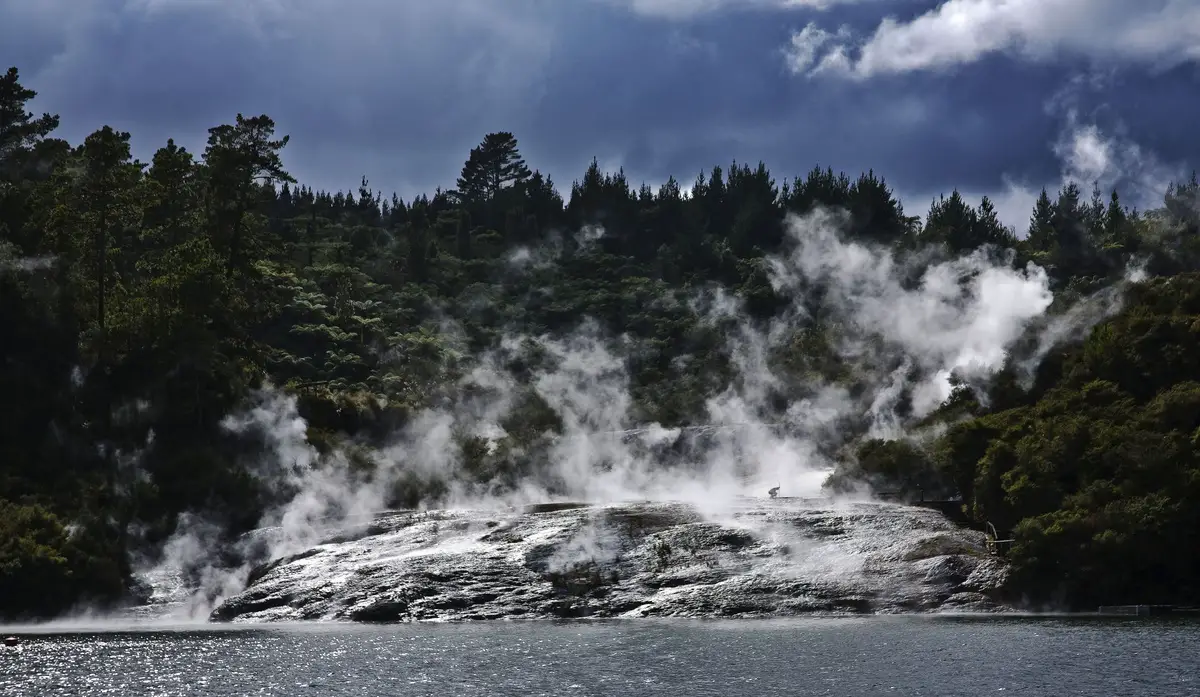
The formation of this unique natural wonder started with a catastrophic earthquake in 131 AD. Then the tectonic forces created several terraces and, most likely, opened the access between the volcanic heat deeper in the ground and the land surface. The water in the ground was heated up and gradually started to dissolve the silica from the volcanic rocks. This silica traveled upwards together with the superheated water. When it reached the atmosphere and the water cooled, the silica was deposited, creating bright white sinter formations. Additional colors – orange, bright green, and diverse hues of brown – were added by microorganisms. Add to this the eternal vapor, occasional fountains of geysers, and, of course, the hissing, roaring, and bubbling amidst the tropical vegetation – and you have one of the most unusual and beautiful spectacles that nature can provide.
Partly flooded is the first terrace – Emerald Terrace (Kakariki) that extends up to 35 m below the lake level. Visitors walk along with the bright green algae mats of this terrace towards the next wonders.
The next three terraces are (starting from the river): Rainbow Terrace, Golden Fleece Terrace, and Artist’s Palette Terrace.
Rainbow Terrace or Cascade Terrace
This terrace at the south is called Cascade Terrace but at the north – Rainbow Terrace. There are located the following geothermal features, including some 5-7 geysers (1):
- Diamond Geyser. A geyser with nice sinter formations. It was erupting some 3 – 8 m high until 2005 – 2007 when it became less active and seems to be dormant now.
- Bush Geyser in the bush nearby. It beats up to 1 m high every 20 minutes.
- Cascade Geyser – erupts every 5 – 10 minutes. Its outflow forms part of the white sinter of Rainbow Terrace. This geyser is partly hidden in a cave.
- Sapphire Geyser – a geyser with two vents. It beats some 2 – 3 m high every 20 – 30 minutes, although sometimes it becomes dormant.
- Map of Africa – a large pool that in May 1996 erupted some 30 m high. Now this is a calm, hot pool.
- Devil’s Throat – a boiling alkaline spring that sometimes has shown geyser activity with some 0.5 m high eruptions.
- My Lady’s Lace (Soda Fountain, Waiariki) – a boiling hot spring with nice sinter formations around it. The fervent boiling hits up to 0.5 m high but this is not a true geyser although at times it has erupted up to 1 m high.
- Aorangi Geyser – a former geyser that started to erupt after the flooding of Lake Ohakuri but became inactive soon after. Now, this is a bubbling spring.
- Dante’s Pool – a boiling spring pool with sinter formations.
- Puia Tuhitarata (Hochstetter pool) – former geyser (before the flooding), now – a hot spring that forms sinter.
There are some more (around three) smaller geysers and also other hot springs around.
Golden Fleece Terrace (Te Kapua)
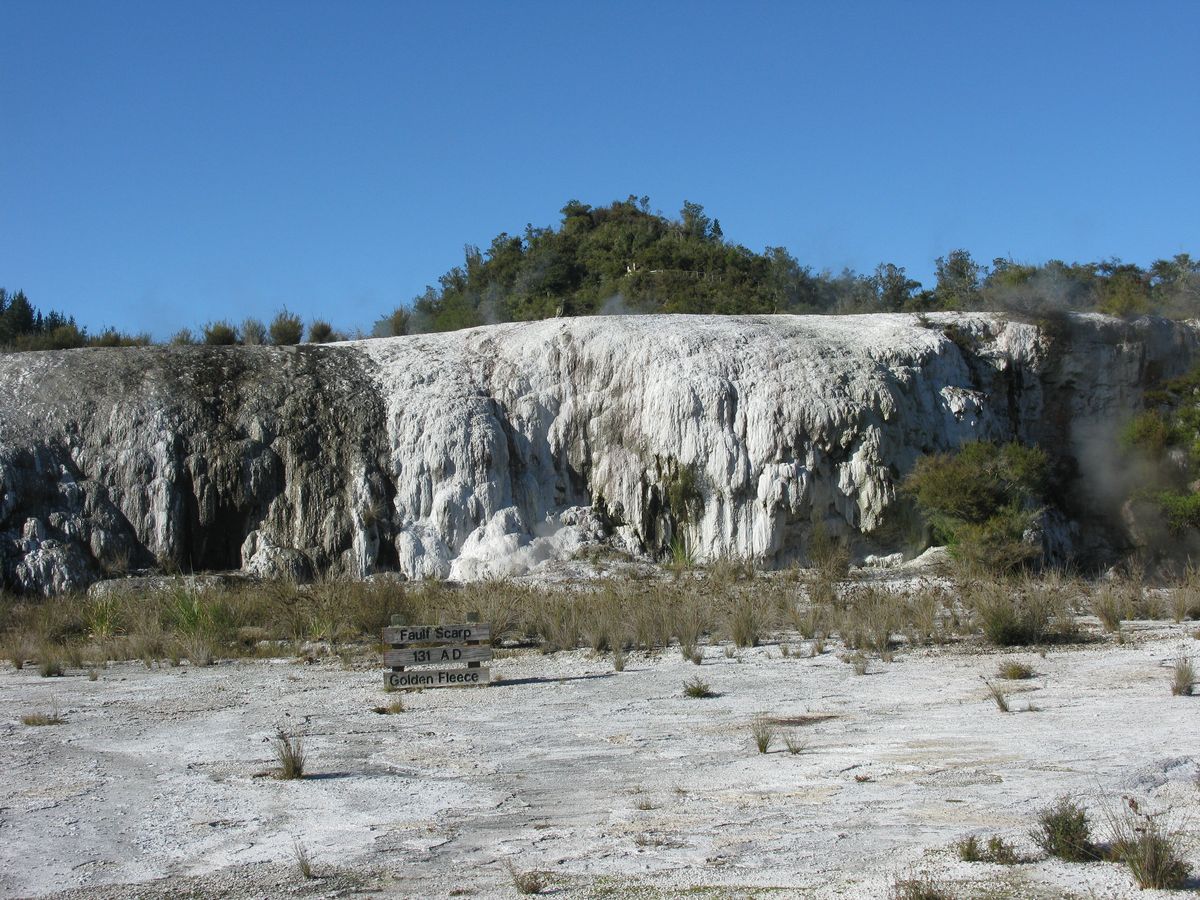
Around this terrace are the following features, including some 4 geysers (1):
- Fred and Maggie Pools – two boiling springs that are depositing sinter.
- Manganese Pool – calm hot spring that deposits sinter. Here is a colony of cyanobacteria that forms yellow stromatolites – a rare occurrence globally.
- Petrifying Pool and Scarp Geyser – two hot springs close together. Scarp Geyser erupted up to 1.5 m high in 2002.
- Cauldron Geyser – a large, beautiful hot spring that deposits sinter. It has an approximately 4 m wide pool. Now it is calm but in the late 1940ies, it was an active geyser.
- Prince of Wales Feathers Geyser – former geyser that was erupting up to 3 m high but stopped in 2003.
- Dreadnought Geyser – a hot spring that earlier turned into a geyser and erupted up to 10 m high. It also creates sinter formations.
- Wairiri Geyser – hot spring that earlier turned into a fairly powerful geyser that erupted some 5 – 8 m high. Activity seems to be stopped around 2003.
- Kurapai (Bendix) Geyser – this intermittent geyser is located some 250 m away from the main touristic part and is not accessible to general tourists. It was created artificially, by driving a pipe in a hot spring in 1961. Sometimes it erupts up to 10 m high with a nice, straight fountain. For the most part of the time, it is dormant and even dry.
- Elephant Rock – partly eroded sinter formation that resembles an elephant, a fumarole.
Artist’s Palette Terrace (Kei Runga ite Mānia)
The upper terrace has the most geysers – although most of them seem to be short-lived. In the recent past, in the middle 1990ies, there were several geysers that erupted even 20 m high but this fervent hydrothermal activity broke the rocks and eruptions ceased. Now there are the following features, including some 25 – 30 former and current geysers (1):
- Palette Pool – a beautiful geyser that creates white sinter formations around its light blue pool. It erupts some 1 – 5 m high, sometimes reaching up to 18 m high. Sometimes there form smaller geysers near the main vent.
- Psyche’s Bath (Gordon’s Geyser, Rock and Roll Geyser) – another active geyser that beats from some 5 m wide pool. It is 5 – 8 m high. In 1957 it was up to 18 m high.
- Unnamed geyser, No OKF0735 – periodically active geyser that erupts 3 – 5 m high.
- Unnamed geyser, No OKF0738 – another periodically active geyser, 1 – 2 m high.
- A group of unnamed geysers, No OKF1012 – several geysers, one sometimes erupts some 5 – 10 m high.
- Square Pool – active geyser that shoots up to 1 m high. It is located in a 5 by 7 m large pool that has got its name due to one straight side. Geyser is depositing sinter around it.
- Unnamed geysers, numbered OKF0764, OKF0766, OKF0772, OKF0760/1, OKF0773, OKF0774, OKF0770, OKF0782, OKF0783, OKF0795, OKF0806 and two vents at OKF0773 – 13 active geysers. These are some 0.5 – 8 m high geysers, also creating sinter rims around them. An unusual feature is OKF0795 – most likely these are two geysers under the ground both using a single vent.
- Pyramid of Geysers, numbered OKF0812, OKF0824, OKF0817, OKF0818, OKF0819 – a group of five geysers that have formed a pyramidal sinter formation at the Artist’s Palette terrace. Geysers are up to 0.5 m high. Especially beautiful is one of them, named also Bottom Vent, with a circular, blue basin.
- Unnamed geysers, numbered OKF0834 and OKF0844 – two smaller geysers that erupt up to 0.5 m high.
Ruatapu Cave and mud pools
Above the main wonders of Orakei Korako is a very special natural wonder – Ruatapu Cave (Sacred Cave). There are very few caves in the world’s geothermal fields – most sources mention that there are only two, without naming the other one.
One can descend 40 m deep in this cave and reach a hot pool of lucid, green water – Waiwhakaata Pool that is 8 by 4 m large.
Nearer to the cave are several mud pools. Contrary to the lucid geyser pools that are alkalic, mud pools are formed by acidic water that dissolves the rocks and soil, turning them into the mud. From the trail can be seen two mud pools – Kōhua Poharu northern and southern mud pools.
Exclusive tourist area
Orakei Korako is a historical Māori settlement area and locals have known about the hydrothermal features long before the arrival of Europeans (3).
The land there is owned by a Māori trust trying to establish a balance between the wish of numerous people to see this natural wonder and the necessity to keep this area as pristine and charming as possible.
Waipapa can be accessed only by boat and there is a quite high price for the trip to the area – thus, this is not exactly a mass tourism site. The site has well-maintained tourist paths and informative signs at prominent geothermal features.
In Orakei Korako are other hot springs and also some geysers, for example in the Red Hills area to the south of Waipapa. There is a so-called Hot Waterfall Geyser (2) some 10 m above the water level – it creates a stream of hot water. This site is off-limits for general tourists, but – there is also less to see.
References
- Ashley D. Cody, Ron F. Keam, Jesse Lebe, Bridget Lynne, Katherine Luketina. Sinter-forming springs and geysers of the Waikato region, July 2021. Accessed on January 22, 2022.
- Dirk Niermann. Volcanic springs, Orakei Korako. Accessed on January 22, 2022.
- Orakei Korako, the official site. Accessed on January 23, 2022.
 Linked articles
Linked articles
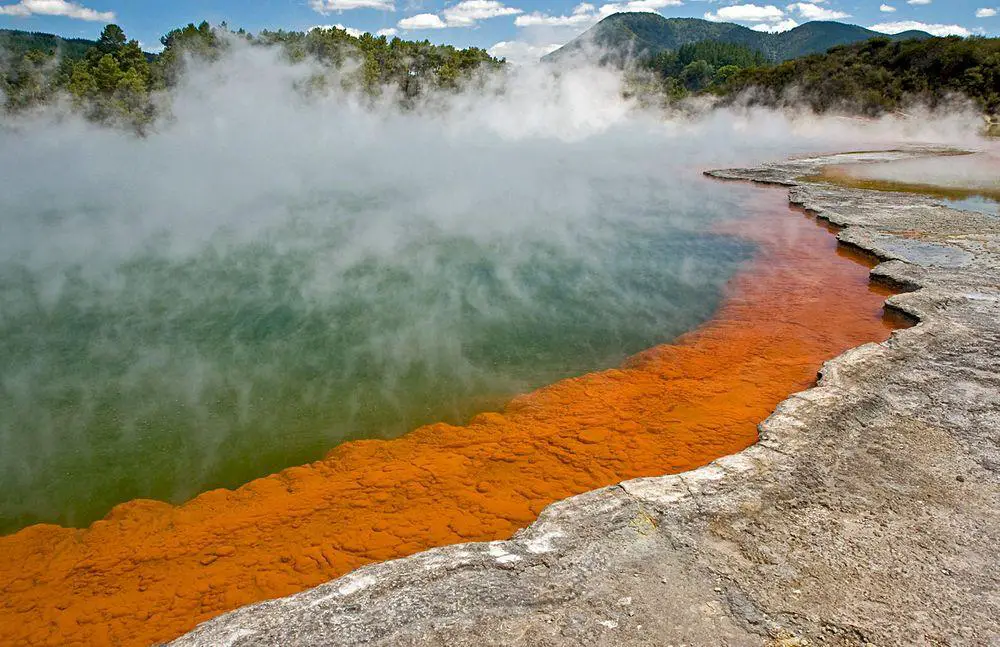
Wonders of New Zealand
The island nation of New Zealand hosts some of the most impressive natural attractions in the world. The number of attractions is divided almost equally between two large islands – the South and North islands.
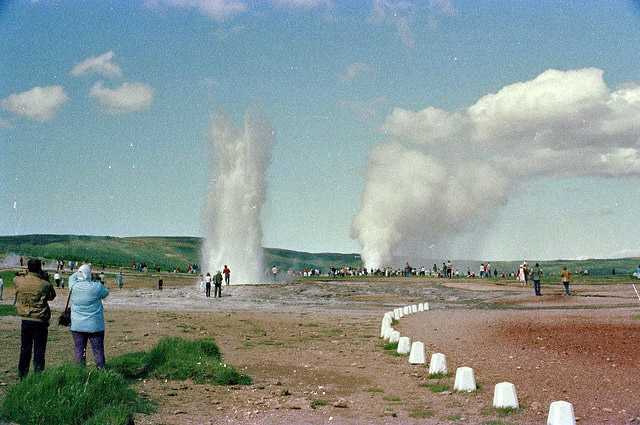
Geysers
Hasty hydrogeologists would say: geysers are thermodynamically and hydrodynamically unstable hot springs. “Normal” people would say – geysers are hot springs that at more or less regular intervals shoot up a fountain of boiling water and steam. Sometimes these fountains are even 100 m tall… or even 450 m!
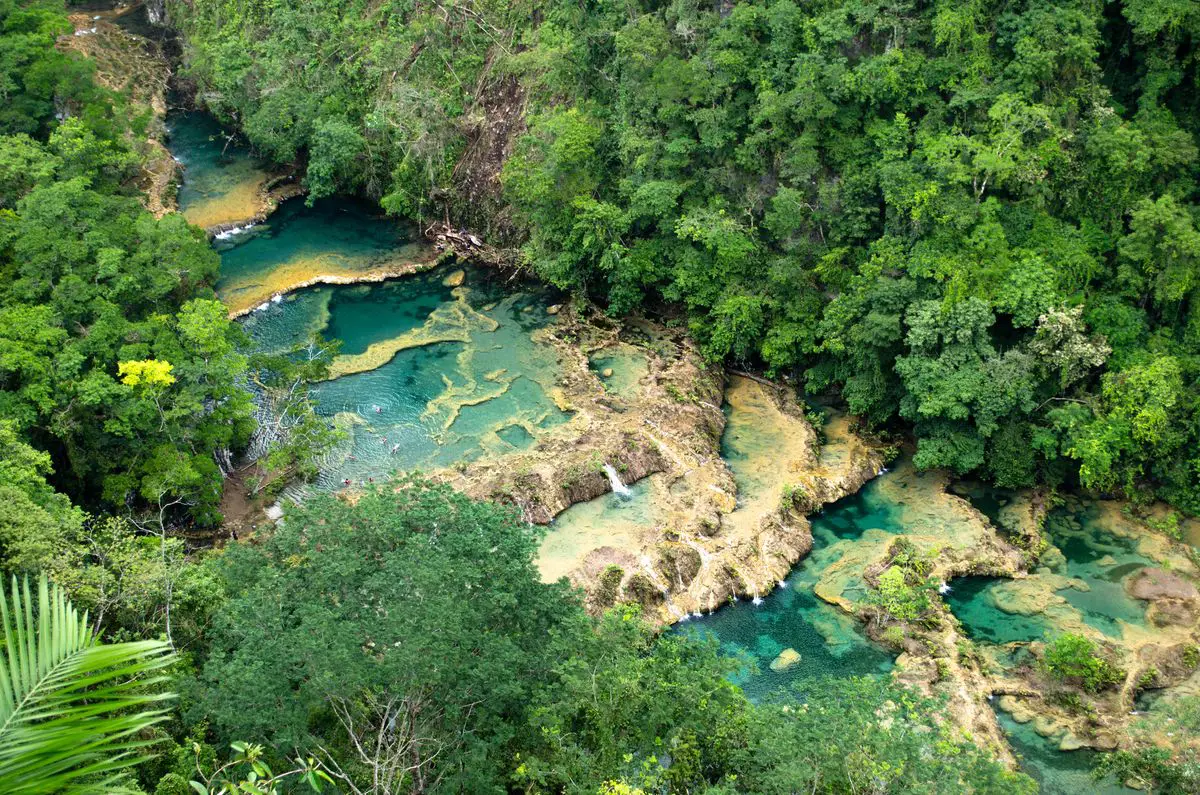
Spring tufa, travertine, and other formations
This category includes very diverse landmarks that have one thing in common: all of them are created by springs that are depositing chemical sediments – silica, carbonates, salt, or other chemical compounds.
 Recommended books
Recommended books
Between Each Step: A Married Couple’s Thru Hike On New Zealand’s Te Araroa
Shedding years of societal conditioning that dictates school, work, and life, Patrice and Justin La Vigne do their best to maintain a nomadic whimsy. However, this nontraditional life presents just as many moments of joy and grace as moments of stress and hardship. It’s in the rawness of long-distance hiking that the couple builds confidence to continue their “life less ordinary.”
DK Eyewitness New Zealand (Travel Guide)
From the subtropical kauri forests of the North Island to the remote fjords of the South Island, New Zealand offers plenty of opportunities for adventure. Explore cultural cities, climb mammoth mountains, marvel at the icy-blue glacial lakes, or spend an afternoon in idyllic vineyards.


